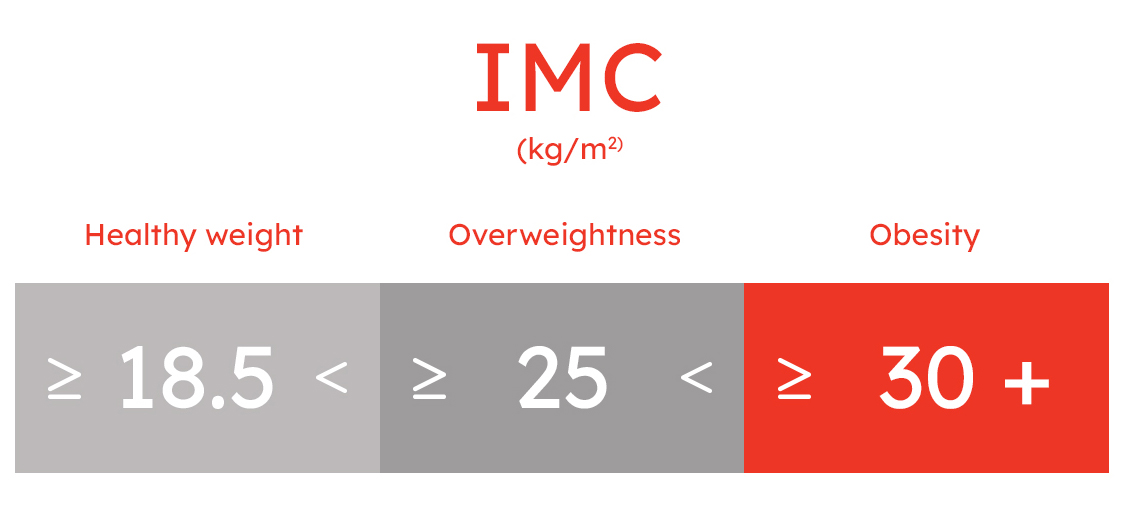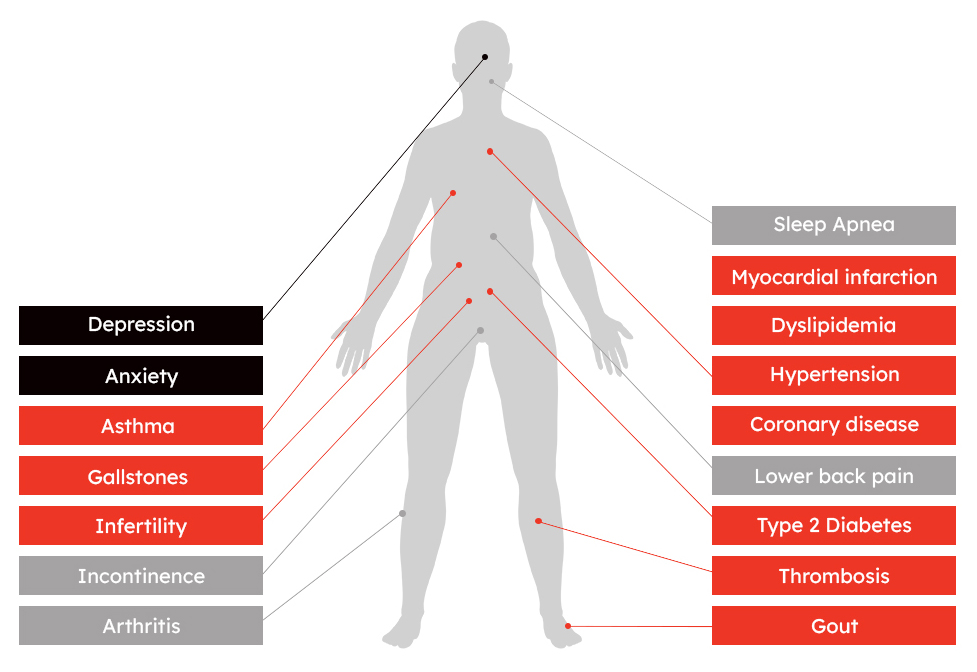Obesity is deemed a chronic disease, is related to more than 200 health problems, and can reduce life expectancy by up to 10 years. (2)
The World Health Organization (WHO) defines overweightness and obesity as an abnormal or excess storage of fat that can lead to various health problems. To define overweightness or obesity the WHO uses the Body Mass Index (BMI). (3)
BMI is calculated by dividing the weight of a person by their height in meters squared (kg/m²)

Being equal for adult men and women, BMI is a useful measurement index of overweightness and obesity. However, this index is only a general guide that may not correspond to the same degree of fat storage in all individuals, as it does not consider body composition. (4)
CAUSES
There are several factors related to the rising numbers in cases of obesity worldwide, from environmental, genetic, psychological, behavioral and metabolic factors, making it a complex and multifactorial disease. (5)
ASSOCIATED PROBLEMS
Obesity is responsible for the origin or exacerbation of more than 200 diseases, contributing to increased morbidity and mortality. Among the main comorbidities associated with obesity, the following stand out: (1),(6),(7)

Obesity also has a negative impact on life expectancy. For instance, moderately obese (IMC 30-35 kg/m²) and morbidly obese (IMC 40-45 kg/m²) patients have been found to have a reduced life expectancy of 2-4 years and 8-10 years, respectively. These estimates are reached while comparing these numbers to those of individuals with a BMI within recommended limits. As for overweightness, for every 5 kg/m² that a patient's BMI increases, there is an increased risk of approximately 40% mortality due to vascular disease. (8)
WHY IS IT SO HARD TO LOSE WEIGHT?
WEIGHT LOSS TREATMENT AND CONTROL
For many obese and overweight individuals, current treatment options focus on the importance of lifestyle changes, an approach that often produces only modest or transient results for patients. If lifestyle changes fail, individuals may seek alternative treatments, including pharmacotherapy and bariatric surgery. (9)
MEDINFAR produces a medicine that is indicated for the treatment of obesity.
UPDATES
Stay up to date with the main news related to obesity at www.myobesidade.pt
MEDINFAR MISSION
Our mission is to help people who fight obesity to achieve their goals by reducing their weight but also by providing a better quality of life.
